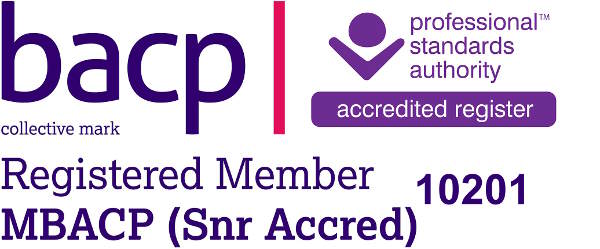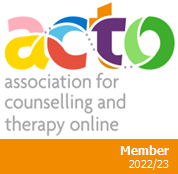Trauma and PTSD Post Traumatic Stress Disorder
Trauma is a word we hear a lot today. Trauma overwhelms our nervous system and our coping so we feel powerless in the face of the hugeness of what is happening. Some statistics report that 50% of people will experience a trauma at some point in their life. The traumatic event provokes fear, helplessness, or horror in response to the threat of injury or death, either to oneself or another. None of us are immune to trauma. Examples of traumatic events include abuse in its different forms, natural disasters, and assault and road traffic incidents.
Most people find it’s normal to have distressing emotions after a traumatic event - typically, flashbacks and nightmares relating to the event. It is normal to have trauma responses to trauma – which means coping in the short term with the distress. It’s usual to have heightened anxiety, to feel on edge, like it’s surreal, to feel numb or detached. It’s usual to feel on edge and to have difficulty sleeping after a traumatic event. Is also very normal to have distressing emotions, flashbacks and nightmares of the event. These symptoms usually resolve naturally over time.
Persistent symptoms can develop into PTSD when the symptoms put a person in constant “on guard” mode and affect their functioning and relationships. It’s like being stuck in alert mode – the fire alarm constantly firing. Many people who experience a trauma will experience some initial symptoms which lessen and disappear after a number of weeks.
Trauma can make us that feel our lives are unpredictable and uncertain. It puts us into “keep safe mode” which although, helps get through the trauma, sometimes people remain stuck there – feeling constantly unsafe. Our trust in self and others is reduced. It’s as if the smoke detector part of our brain (amygdala) is on, constantly. Persistent symptoms can develop into PTSD. (See anxiety section). Post-traumatic stress disorder (PTSD) is an anxiety disorder, caused by very stressful, frightening or distressing events. (NHS definition).
When we hear PTSD we often think of people who have served in the forces coming home with what used to be called “shell shock”. But blocked trauma is much closer to home than this. Despite it having been noticed for decades, PTSD only become a formal diagnosis in the 1980s.
PTSD can develop if you have experienced a traumatic event - or if you witnessed, in person, a traumatic event. It can also occur if you discover that someone close to you has experienced, or was threatened by, the traumatic event. It can happen too if you are repeatedly exposed to graphic details of traumatic events, for example in the course of your work role.
PTSD can be diagnosed when symptoms are present for a minimum of a month following the traumatic event and significantly affect functioning then PTSD or Complex PTSD may be present. For some people PTSD symptoms can take months or even years to develop.
Symptoms before this are utterly normal and our understandably human response to the unimaginable. PTSD symptoms include having intrusive thoughts, which mean a constant re-experiencing of a traumatic event, like a video on replay. This results in detachment, numbness, dissociation, avoidance and hyperarousal, negative thoughts or mood or feelings. Sleep is often affected, with nightmares. The world becomes a place that is perceived as a dangerous and joyless.
With PTSD, the trauma gets frozen or stuck in our bodies and we avoid the traumatic memory or anything that could potentially trigger memories. It’s human to want to stay away from the distressing thoughts, flashbacks. Nightmares, feelings and sensations (which can evoke in any sense). People notice that they feel more activated, sometimes turning to using drink or drugs more, to cope with the trauma and to try to help sleep. It’s estimated that 20% of people who experience trauma develop PTSD - Post Traumatic Stress Disorder. The DSM-5 defines a PTSD trauma as “any situation where one’s life or bodily integrity is threatened”.
PTSD is a normal reaction to an abnormal situation. People who repeatedly experience traumatic situations, such as severe neglect, abuse or violence, may be diagnosed with complex PTSD. Children who experience this are usually described as having developmental trauma, often experiencing prolonged feelings of helplessness at a time when they have no capacity to normalise responses, no resilience and no escape from the terror. Trauma disconnects us from ourselves and affects the way we view ourselves, others or the world. This interpretation continues to affect our daily functioning unless we get help to heal it.
Bessel van der Kolk, who is the guru of trauma, reports “Trauma has nothing whatsoever to do with cognition, (thinking) it has to do with your body being reset to interpret the world as a dangerous place. That reset begins in the deep recesses of the brain with its most primitive structures, regions that no cognitive therapy can access. It’s not something you can talk yourself out of.” From an interview with Bessel van der Kolk New York Times 2014.
Peter Levine describes trauma beautifully - in his book “Waking the Tiger!” 1997:
“Trauma is perhaps the most avoided, ignored, belittled, misunderstood and untreated cause of human suffering. Although it is the source of tremendous distress and dysfunction it is not an ailment or a disease, but the by-product of an instinctively instigated, altered sense of consciousness. We enter this altered state – let’s call it “survival mode” – when we perceive that our lives are being threatened. If we are overwhelmed by the threat and are unable to successfully defend ourselves we can become stuck in survival mode. This highly aroused state is designed solely to enable short term defensive actions; but left untreated over time, it begins to form the symptoms of trauma. These symptoms can invade every aspect of our lives.
Trauma is a basic rupture – loss of connection – to ourselves, our families, and the world. The loss, although enormous, is difficult to appreciate because it happens gradually. We adjust to these slight changes, sometimes without taking notice of them at all. Contrary to the view of psychiatric medicine that trauma is basically untreatable and only marginally controllable by drugs - when treated thoroughly healing can lead not only to symptom reduction, but long term transformation” (P 23)
When we experience trauma our nervous system is flooded and our brain cannot process. Consider how we hold memory. We can remember good memories in detail like a special day or a Christmas still we don’t remember with the all the sensory vividness that we can remember a trauma memory. Trauma gets frozen with all the original sights, sounds, smells and other sensory information. The body remembers - in fragmented pieces of sensory experience. With the experience of an intense fearful and traumatic event that affects body and mind, the brain can “suspend” normal operations while in survival mode - fight, flight, freeze, fawn or flop. It has been called a memory filing error or a blocked processing. Some say PTSD is, in this way, a processing problem and some treatment enables processing, like EMDR.
Usually when we gather information from our senses about the world around us information comes into our memory system and it gets changed into a form that the system can cope with, so that it can then be stored. This is called encoding. If this processing or encoding doesn’t happen in a traumatic situation – the memory can’t be processed. Instead, it is stored randomly, in fragments, in the brain. It’s like trying to make sense of a picture from isolated shards of broken glass.
When the mind attempts to file the ‘memory’ of the trauma the brain does not recognise it as a memory – it interprets it as if it’s happening in the here and now. We get triggered - in the present, it is activated as the here and now, not as there and then. With PTSD our brain doesn’t get to timestamp the memory it and file it with other memories, in the past.
The mind will keep trying to process the trauma memory over and over but in doing so it repeatedly triggers itself into a current “I’m in danger” mode. This can cause symptoms of severe anxiety and panic, flashbacks etc.
As explored on the attachment page - we exist in connection to others – Attachment is an attunement between brains and nervous systems – love and connections or the absence of safety and predictable care shape the baby’s brain in positive or damaging ways.
Bessel van der Kolk describes how our brains are meant to be in sync with others, and states that traumatic stress puts our brains out of sync with others. Trauma feels very isolating – forming a disconnect with the world – or others and with the self. Work with trauma involves connection – reconnecting with parts of self and reviewing the interpretations that the brain made at that traumatic time – negative belief like “it’s my fault” “I’m bad” “I’m going to die”.
Van der Kolk describes how Trauma kills imagination. Imagination has helped some people get through the most horrific traumas like Edith Egar in the Choice or Victor Frankl in Man's Search for Meaning. Trauma work utilises the subcortical brain – where imagination lives to help healing and build resources. PTSD can leave you feeling emotionally numb, this can affect communication. Because the nervous system can is hyper activated it's normal to feel more on edge and snappy.
As PTSD is really an information processing problem - a memory filing error, caused by a traumatic event. With trauma, your body only maintains the body functions that are vitally needed. Brains will prioritise getting you heart beating fast to supply oxygenated blood to your arms and legs to run or fight. So, processing and making sense aren’t particularly useful if you have to survive right now. Our thinking brain goes “off line”. It suspends “normal operations” and so it temporarily shuts down some bodily functions that aren’t immediately needed, such as digesting our food or processing memory. The difficulty with this suspended processing, is that the brain does not recognise the memory as a memory but then sees it as a thing that is currently happening.
Trauma Informed Therapy
Work with trauma can be top down or bottom up, as far as our brain is concerned. Bottom up work tends to change the deep regions of the brain (Subcortical).This approach helps through producing less activation of the fear centre (amygdala). It helps regulation of the insula (the self-regulation centre) and activates the memory centre (hippocampus). EMDR and Brainspotting are bottom up approaches which activate the deep brain - subcortical areas and hippocampus (memory centre). These approaches are aimed at stabilising and helping regulate - maintaining you in the window of tolerance – so as not to dissociate (go too low) or panic (go too high). It is very visceral work - body and feeling centred, and involves much less talking, typically than traditional talk therapy.
The first phase of trauma treatment is recommended as being bottom up – to help stabilise and regulate a person before accessing the traumatic memory. Early work will include breathing and grounding. Building resources like calm place, protector’s nurturers, inner wisdom or older wiser self. This resourcing is important as it builds the scaffolding within which the trauma processing work can be done safely.
Top down approaches engage awareness and thinking to change the brain – especially the neocortex or prefrontal cortex (thinking brain). Top down approaches can be used to incorporate trauma treatment experienced.
Therapy helps process the memory and file it in the past. Trauma therapy like EMDR work with a foot in the present and a foot in the past. Therapy like Eye Movement Desensitization Reprocessing are recommended by NICE Guidelines for the treatment of PTSD. For information on trauma informed treatment for PTSD please also see EMDR page.


